Earl Rina
Year of birth: 1987.
Where do you live: Winnipeg, Manitoba, Canada.
Your education: Bachelor of Fine Arts Honours and Bachelor of Science in Nursing.
Describe your art in three words: Playful, Picturesque, and Whimsical.
Your discipline: Interdisciplinary Visual Artist: Painting, Photography, Mixed Media, and Sculpture.
earlrina-art.com | Instagram
How has your Filipino Canadian heritage influenced your approach to art, especially in your exploration of identity and culture?
My Filipino Canadian heritage is a mix of nuances, society, and lifestyle that have shaped my upbringing and continue to be an integral part of my journey to Canada. Born and raised in the Philippines, I immigrated to Canada, bringing with me the strong culture and traditions of my homeland. From a young age, I was immersed in the Filipino Canadian lifestyle through my relatives and the LGBTQ+ community in the Philippines. This early exposure to the unique blend of cultures and my community profoundly influenced my artistic choices and approach. Now, as a resident of Winnipeg, Manitoba, I am continually inspired by the multicultural nature of Canadian society. Living among my Filipino Canadian relatives and the 2SLGBTQ+ community, I have gained a deeper understanding of our shared experiences. This ongoing exposure has made me more curious and passionate about exploring my identity and culture through my art.
Understanding my heritage has been an essential part of my creative process. The challenges faced by the Filipino Canadian and 2SLGBTQ+ communities have provided me with several stories and themes that often make up the core of my artwork. I hope that my work will spark conversations that uplift and celebrate my community, while also addressing societal perceptions and issues. Through my work, I always try to honor and share the rich culture of the Filipino Canadian and 2SLGBTQ+ communities, developing a greater appreciation and understanding of our collective journey.
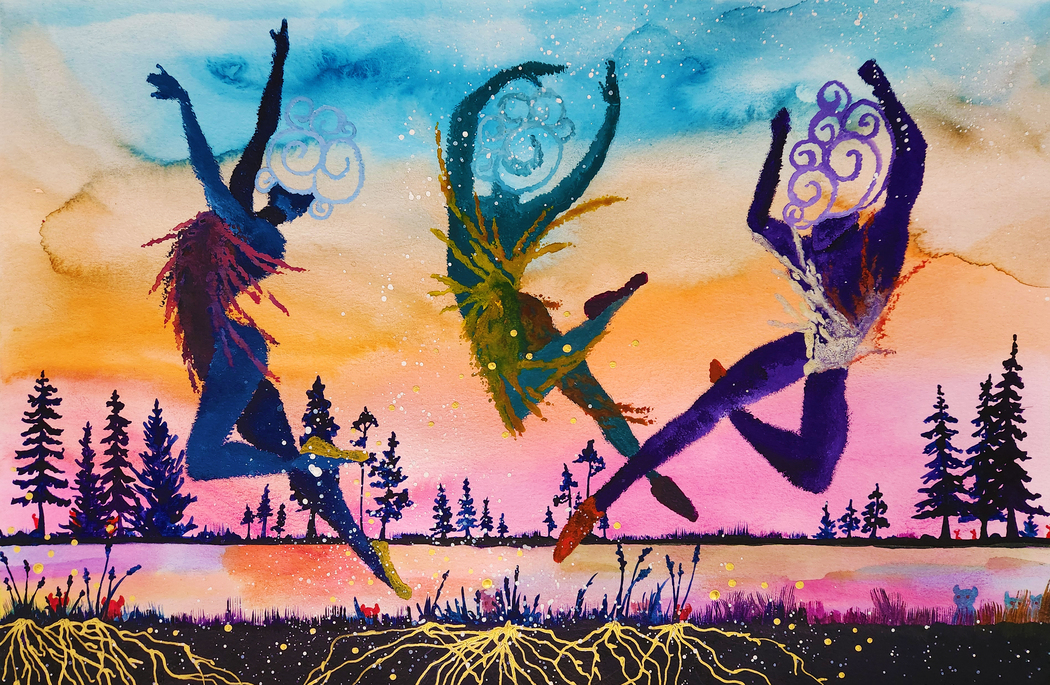 Earl Rina | Hop Out | 2024
Earl Rina | Hop Out | 2024
In your work, there seems to be a strong connection between natural environments and human emotions. How do you approach blending these two elements in your art?
In my artistic practice, I often explore the interplay between emotional experiences and the natural environment, reflecting the complexities of our daily interactions. My work addresses social themes such as sexuality, identity, and my Filipino Canadian heritage. By immersing myself in social issues and the natural world, I gain a deeper understanding of my emotions and the context surrounding these issues. I pay close attention to details such as the location of events and the elements of the natural environment involved.
My creative process is a journey of exploration and connection. It begins with inspiration and observation. I often take time to be in a natural environment to observe the world around me. This could be a walk in the park, a visit to a new place, or simply spending time in my garden. I pay attention to the details—the colors, textures, patterns, and how they make me feel. This initial stage is crucial as it sets the foundation for my work.
Next, I engage with my community to understand their perspectives on various social issues. This involves conversations, interviews, and participating in community events. I gather insights on topics such as the challenges faced by the 2SLGBTQ+ community and the experiences of Filipino-Canadians with immigration. This research and community engagement provide me with a wealth of information that I can draw upon in my art.
Following this, I reflect on my own emotional responses to the natural environment and the societal issues I’ve researched. This introspection helps me understand how these elements resonate with me personally. It is a very personal process that allows me to connect with my emotions, many of which I have not explored before, on a deeper level.
With these insights and emotions in mind, I move on to concept development. I take the insights and emotions I’ve gathered and form them into a cohesive concept. This involves sketching, brainstorming, and experimenting with different ideas. I think about how to visually represent the themes and emotions in a way that is playful and picturesque, showing whimsical exploration of movement, figurative visuals, natural patterns, and symbolic landscapes. This stage is where my first ideas start to take shape and form.
Once I have a clear concept, I begin the actual creation process. I use various mediums—paint, canvas, digital tools—to bring my vision to life. I focus on creating movement, figurative visuals, natural patterns, and symbolic landscapes that convey the themes I’m exploring. This is the most exciting part of the process as I see my ideas come to life.
After completing the piece, I take time to reflect on it. I consider how well it communicates the intended message and emotions. I may make adjustments or refinements to make sure it matches my vision. This reflection and refinement stage is needed to ensure that the final piece is true to my original concept.
Finally, I share my work with my friends, family, and community to seek feedback. This helps me understand how others perceive my art and provides valuable insights for future projects. Sharing my work is a rewarding experience as it allows me to connect with others and see how my art resonates with them, even if it does not always match my intentions.
Overall, my artistic practice is a deeply personal and reflective process that combines emotional experiences with the natural environment. By engaging with my community and immersing myself in societal issues, I gain a deeper understanding of my emotions and the context surrounding these issues. This allows me to create art that is both meaningful and thought-provoking, offering a unique perspective on the world.
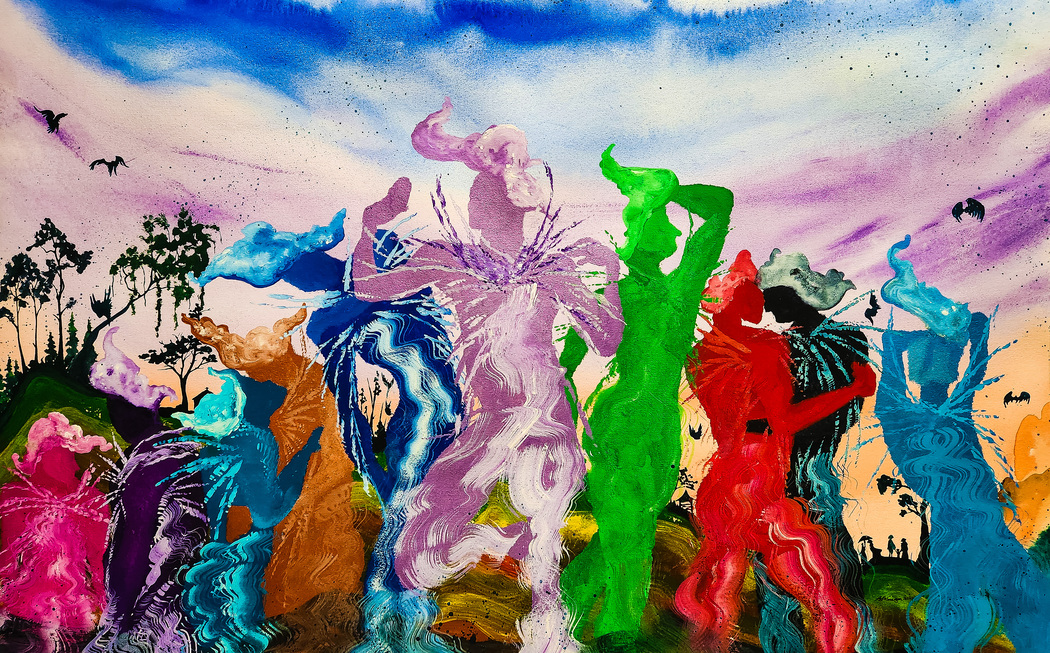 Earl Rina | Motion | 2024
Earl Rina | Motion | 2024
You use a wide range of media and techniques in your work. How do you decide which medium to use for a particular piece?
As an interdisciplinary visual artist, my practice is fueled by a strong curiosity and a sense of wonder for exploring diverse mediums. In this contemporary era, the possibilities for artistic creation are boundless, with new discoveries constantly emerging. This spirit of exploration, creativity, and experimentation is at the heart of my work, allowing me to convey deeper themes and emotions through my art.
Choosing the right medium is never a straightforward task. Each medium offers unique possibilities and challenges, and I embrace the openness of all mediums, allowing myself the freedom to explore and experiment. This approach ensures that my artwork resonates deeply, reflecting the dynamic nature of human experience. Whether it’s traditional painting, digital media, sculpture, or mixed media, I find that each medium brings a new aspect to my work, and through this, I can create stronger narratives.
Moreover, I am mindful of the availability, eco-friendliness, and economic considerations of the materials I use. In an age where environmental consciousness is so important, I try to integrate sustainable practices and thoughtful resource management into my creative process. This means selecting materials that are not only effective in conveying my artistic vision but also minimize environmental impact. By doing so, I aim to create art that not only speaks to the human condition but also respects and preserves our environment.
This holistic approach enriches my creative process, making each piece connected to both artistic innovation and environmental consciousness. It allows me to create works that are not only visually and emotionally compelling but also ethically and environmentally responsible. Through this balance of creativity, experimentation, and sustainability, I hope to inspire others to see the potential for art to make a positive impact on both individuals and the world at large.
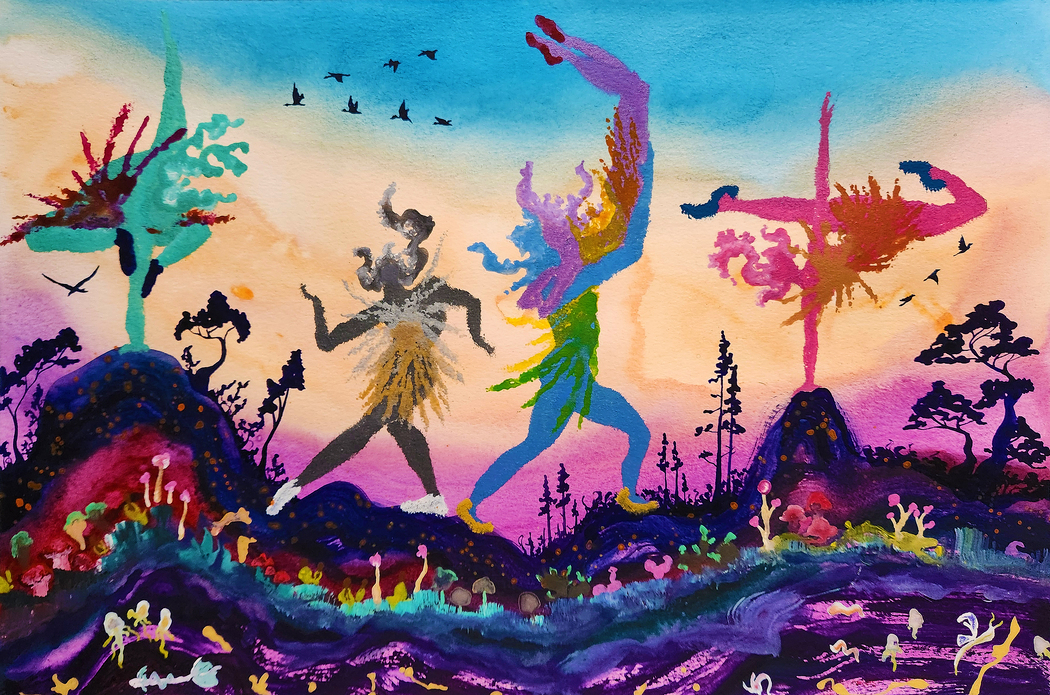 Earl Rina | Wild | 2024
Earl Rina | Wild | 2024
Your work is often described as whimsical yet thought-provoking. How do you maintain this balance in your creative process?
Yes, my artwork is indeed whimsical and thought-provoking, though there are times when it may not fully embody both qualities. The key to maintaining this balance lies in having a solid foundation of concepts, ideas, and knowledge.
When I start a painting, I immerse myself in the subject matter, gathering inspiration and information from various sources. This preparation phase allows me to explore different perspectives and ideas, which I then blend with my natural creativity. By allowing myself to play and experiment with these ideas, I can add a sense of delight and curiosity to my work.
At the same time, I remain mindful of the deeper messages I want to convey. This involves reflecting on the themes and emotions I wish to evoke. By balancing playful creativity with thoughtful introspection, I can create pieces that are both engaging and meaningful.
Ultimately, it’s this interplay between lightheartedness and depth that defines my creative process. As long as I stay true to my vision and continue to nurture my ideas and knowledge, I can maintain this delicate balance in my artwork.
How do you navigate the balance between your artistic practice and your ongoing education in fine arts?
Balancing my artistic practice with my ongoing education in fine arts has been a deeply enriching experience. My Bachelor of Fine Arts Honours program is not just a separate entity but an integral part of my artistic journey. The coursework, critiques, and theoretical studies directly inform and inspire my creative process, creating a symbiotic relationship that allows me to continuously refine my concepts and themes.
Through my education, I have been exposed to a wide range of artistic theories, historical contexts, and contemporary practices. This exposure helps me develop more nuanced and sophisticated concepts in my artwork. I can experiment with different styles and mediums, informed by the knowledge I gain in my classes. The academic environment encourages exploration and experimentation, providing access to resources, workshops, and mentorship that might not be available outside of an educational setting. Most importantly, this support system allows me to take creative risks and push the boundaries of my practice.
My education provides a structured way to expand my knowledge base. Whether it’s learning new techniques, understanding art history, or engaging with critical theory, this knowledge directly feeds into my artistic practice. It helps me make informed decisions and adds depth to my work. One of the most valuable aspects of being in an academic setting is the regular feedback and critique from peers and instructors. This feedback loop is crucial for growth and improvement, helping me see my work from different perspectives and refine my approach.
Balancing both can be challenging, but it also teaches me valuable time management skills. I learned to prioritize tasks, set realistic goals, and maintain a disciplined approach to both my studies and my practice. In essence, my ongoing education and artistic practice are mixed together, each enriching the other and contributing to my overall growth as an artist.
This balance has significantly impacted my recent projects, allowing me to create work that is both conceptually rich and technically proficient. The integration of my education and practice has not only enhanced my artistic abilities but also deepened my understanding of the art world and my place within it.
As someone who has exhibited both online and in physical galleries, how do you see the future of art exhibitions in the digital age?
The future of art exhibitions in the digital age is a fascinating and evolving landscape. As technology continues to advance, the ways in which art is created, displayed, and experienced are undergoing significant transformations. I think that three key trends shaping the future of art exhibitions are virtual and augmented reality, hybrid exhibitions, and global accessibility.
One of the most exciting developments in the digital age is the use of virtual and augmented reality (VR and AR) in art exhibitions. These virtual spaces allow for interactive and engaging experiences, letting viewers explore art in a three-dimensional environment from the comfort of their own homes.
Hybrid exhibitions blend physical and digital elements, and they are becoming increasingly popular. Hybrid exhibitions combine the tangible experience of physical galleries with the accessibility and innovation of digital platforms.
Furthermore, digital exhibitions are breaking down geographical barriers, allowing artists to reach a global audience. Online platforms and social media have made it easier for artists to share their work with a wider audience, regardless of their location. This increased accessibility is particularly important for emerging artists who may not have the resources to exhibit their work in traditional galleries. Additionally, digital exhibitions can be more inclusive, providing access to people with disabilities who might find it challenging to visit physical galleries. This not only enhances the viewer’s experience but also opens up new creative possibilities for artists.
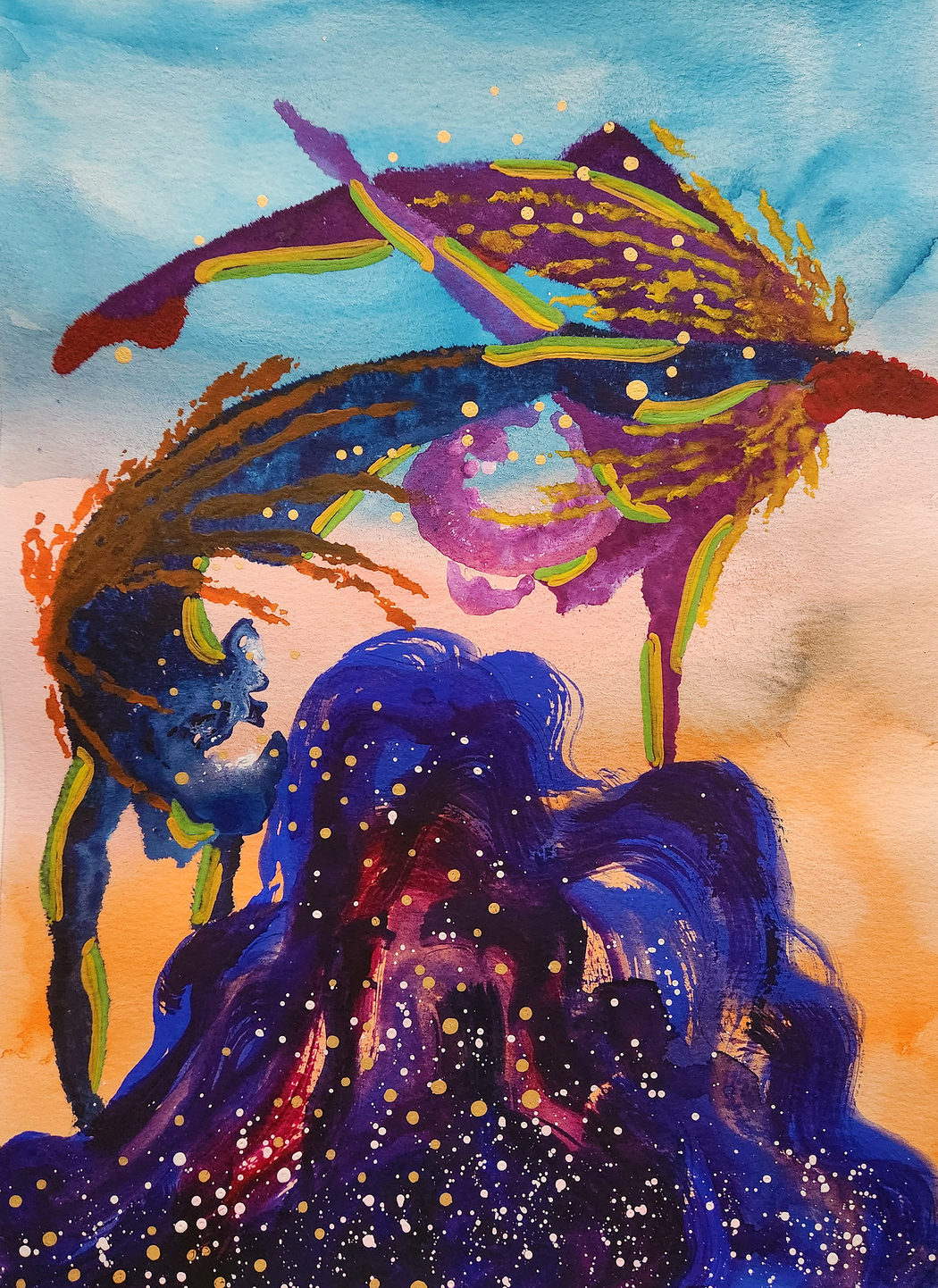 Earl Rina | At the Top | 2024
Earl Rina | At the Top | 2024
What advice would you give to emerging artists who are also navigating their identity and heritage through their work?
Exploring my identity and heritage through my art has been a deeply personal and rewarding journey. As an emerging artist, I have found that embracing authenticity is very important. Staying true to my experiences and perspectives allows my unique voice to shine through, making my work more genuine and impactful.
Experimentation and research have also played significant roles in my artistic journey. I have learned not to be afraid of trying new techniques, mediums, or styles. This willingness to research has helped me find the best ways to express my identity and heritage, allowing my art to evolve and grow.
Connecting with the community has been invaluable. Engaging with other artists and communities who share similar backgrounds or interests has provided me with support, inspiration, and opportunities for collaboration. These connections have enriched my work and helped me feel less isolated in my journey.
Telling my story through my art has been a powerful way to connect with my audience. Sharing my personal narrative allows others to understand my perspective and creates a deeper connection between my work and those who experience it.
Staying open to feedback has been essential for my growth as an artist. Constructive criticism has helped me improve and refine my work. While it can be challenging to hear, I have learned to trust my instincts and balance feedback with my vision.
Finally, seeking mentorship has provided me with invaluable guidance. Finding mentors who can support me through my artistic and personal journey has been a source of strength and inspiration. Their experience and wisdom have helped me navigate the complexities of my path.
I would like to share with you my recent artwork themed “Playful Picturesque.” This collection represents a whimsical take on the exploration of movement, emotions, and adventurous colorful figurative visuals. Through this theme, I aim to illustrate the connections between our daily encounters with our sexuality, identity, culture, and natural environment.
In my artwork, I use bright colors, along with figurative shapes and humorous elements, to deliberately create contrast and irony. This approach allows me to explore these serious connections in a lighthearted yet thought-provoking manner. As an interdisciplinary visual artist, I blend my works with these themes to create new pieces such as my self-portraits and the “erotic gay gaze,” which are a blend of digital art and mixed media.
Additionally, my works titled “Grassland,” which showcase the beauty of local grasslands, are incorporated within my “Playful Picturesque” artworks. These pieces highlight symbolic landscapes and natural patterns. The playfulness in my works explores and discovers the intricacies of movement, natural patterns, and symbolic landscapes.
My approach to art is multifaceted, reflecting a commitment to creating a dialogue on the inevitable connections that shape our world. Through “Playful Picturesque,” I aim to engage viewers in a conversation about the complex interplay between our personal experiences and the broader cultural and natural environments we inhabit. This collection reflects my dedication to exploring and expressing the deep connections that define our existence.

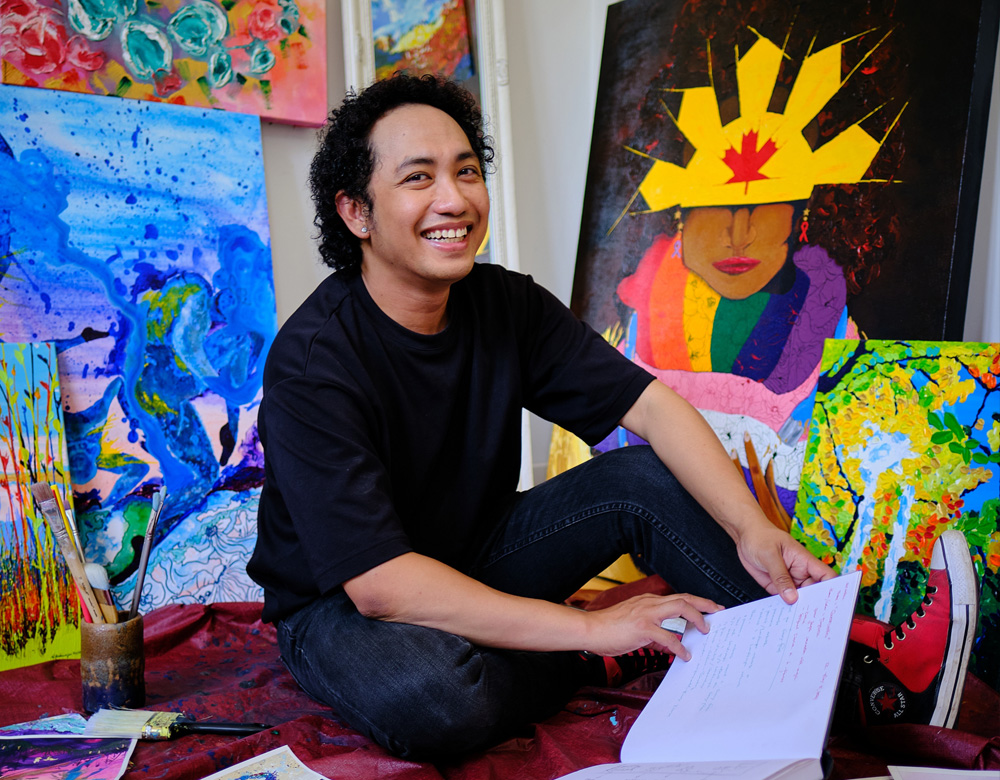
Leave a Reply
You must be logged in to post a comment.